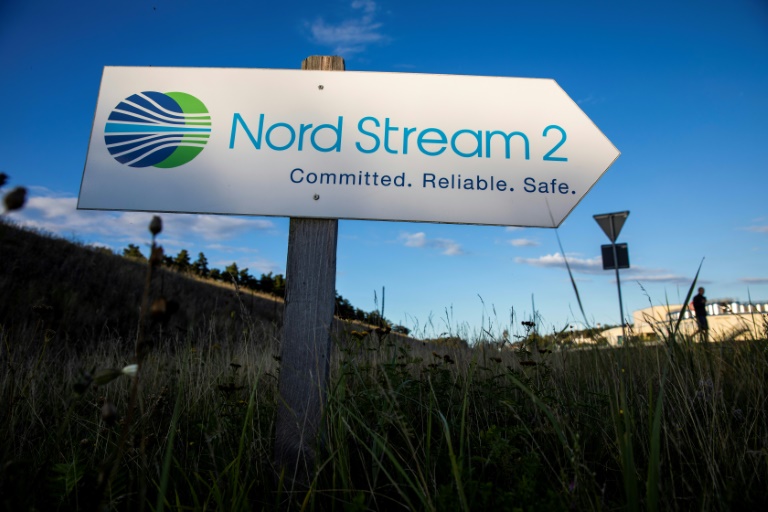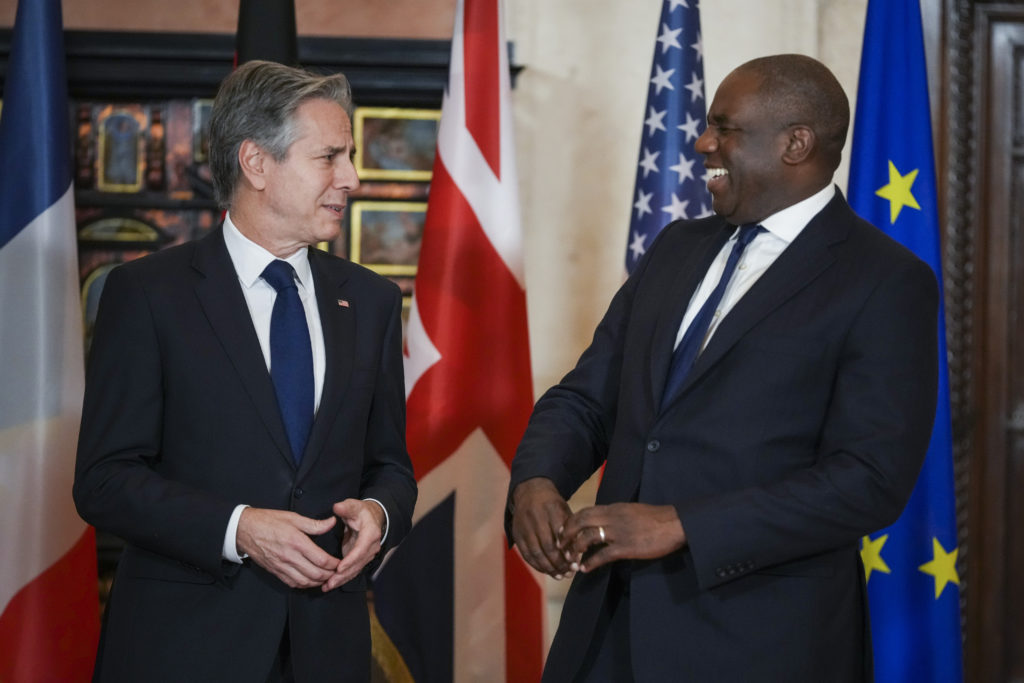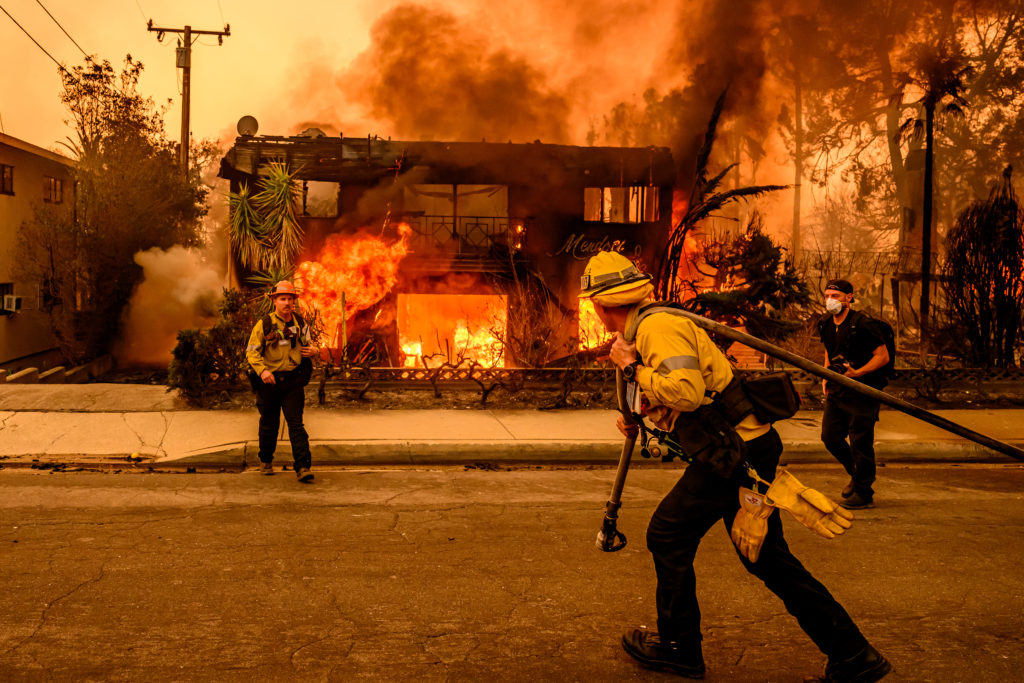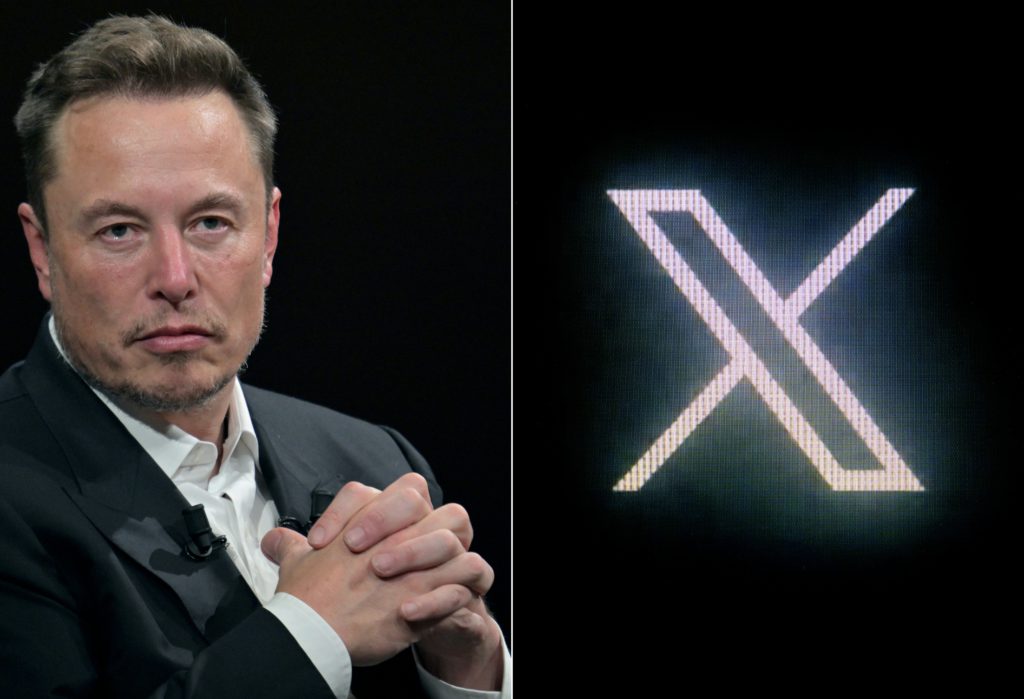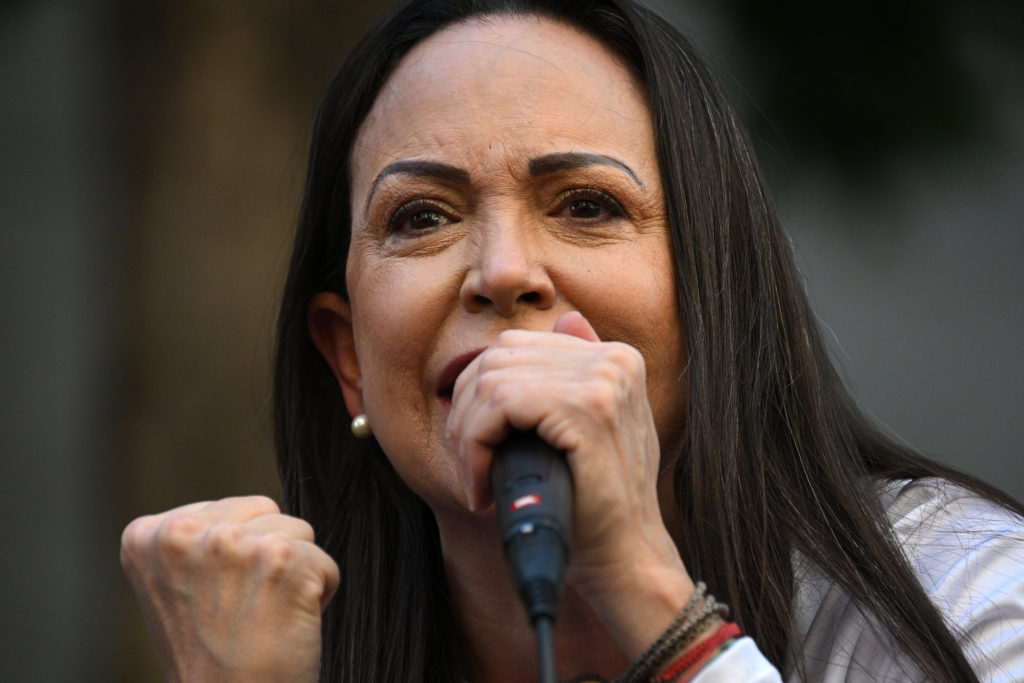In the showdown over Russia’s implicit threat to invade Ukraine, the United States and European allies are eyeing what they see is a major vulnerability for Moscow — the just-completed Nord Stream 2 pipeline to carry natural gas to Europe.
US officials made clear Tuesday after President Joe Biden’s two-hour video call with Vladimir Putin that if the Russian leader does take military action against Ukraine, freezing the pipeline and its money-earning potential would be a key mode of retaliation.
“It is leverage for the West, because if Vladimir Putin wants to see gas flow through that pipeline, he may not want to take the risk of invading Ukraine,” said White House National Security Advisor Jake Sullivan.
“If President Putin moves on Ukraine, our expectation is that the pipeline will be suspended,” said Victoria Nuland, US Under Secretary of State.
The 10 billion-euro ($12 billion) pipeline, majority-owned by Russian giant Gazprom, was announced as completed in September, just around the time the Russian buildup of some 100,000 troops near the Ukraine border began.
Running underwater from Russia’s Baltic coast to northeastern Germany, the 1,200-kilometer (745 miles) pipeline follows the same route as Nord Stream 1, which was completed over a decade ago.
Like its twin, Nord Stream 2 will be able to pipe 55 billion cubic meters of gas per year to Europe, increasing the continent’s access to relatively cheap natural gas at a time of falling domestic production.
It also promises billions of dollars a year in earnings to Moscow, especially with the elevated prices of oil and gas now.
Europe has been deeply invested in the pipeline, expecting it to bring a strong supply of gas — cheaper and greener than oil — to the continent.
– German response –
Germany, which already imports around 40 percent of its gas from Russia, has taken a lead in supporting the project, resisting US pressure to minimize energy dependence on Moscow.
But with Russia threatening Ukraine, US officials believe that Germany, under incoming Chancellor Olaf Scholz, is amenable to keeping the pipeline’s valves sealed to pressure Putin.
“The fact is that gas is not currently flowing through the Nord Stream 2 pipeline, which means it is not operating, which means that it’s not leverage for Putin,” Sullivan told reporters after the Putin-Biden call.
“We’ve had intensive discussions with both the outgoing and incoming German government on the issue of Nord Stream 2 in the context of a potential invasion,” he said.
“I’m not going to characterize it beyond that, other than it is an object of great priority.”
William Taylor, a former senior US diplomat in Kiev and now vice president of the US Institute of Peace, said using the pipeline to pressure Putin “will get his attention.”
“This is a long-term project for Putin, and we know that this project gives Russia, the Kremlin, real leverage over Europe,” Taylor told AFP.
“The question is, will the Germans go along? Well, the Germans are divided on this,” Taylor said. But if the Russians did invade Ukraine, German consensus could shift to opposing the pipeline.
Nuland, speaking to a hearing in the Senate, expressed confidence that Scholz agreed with Washington.
“We have already been speaking to him in his role as finance minister, and I have no doubt that he understands the seriousness of the situation that we are facing,” she said.
Using the pipeline is still not the heaviest hammer in the Western sanctions arsenal.
That could be banning Russia from SWIFT, the international system of financial transactions that banks and financial firms around the world depend on.
“SWIFT would be a major escalation… in particular for the Russians,” said Taylor.
“The Russians would suffer a lot, but others would too.”

